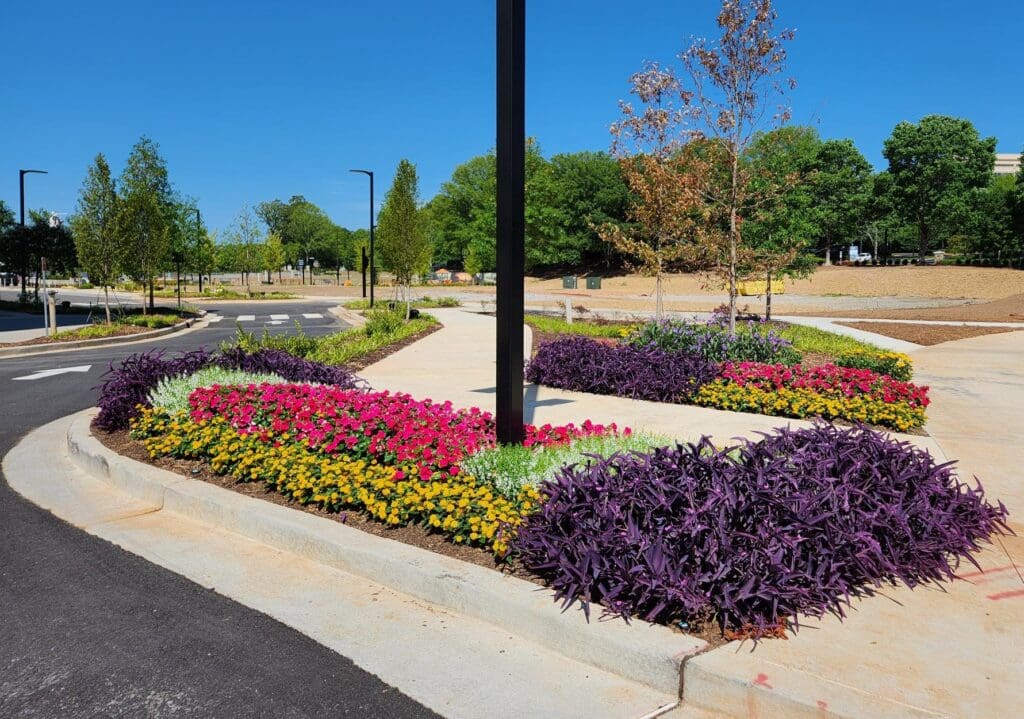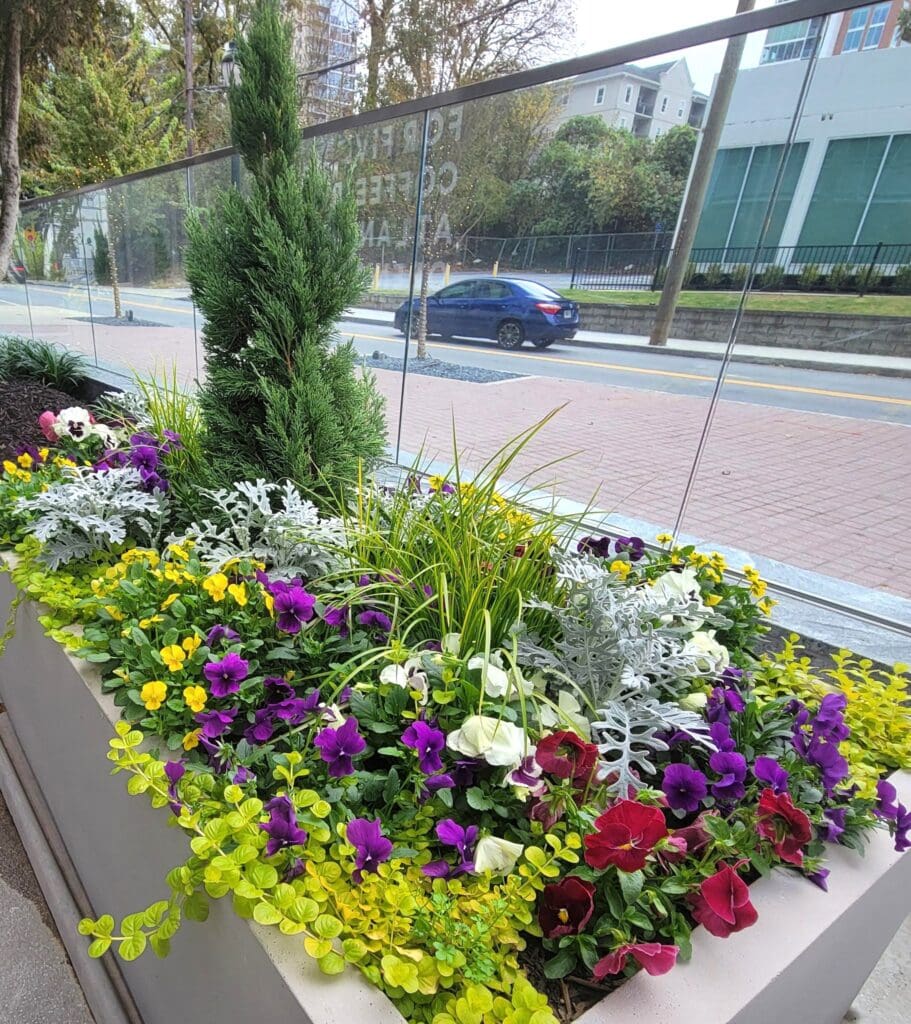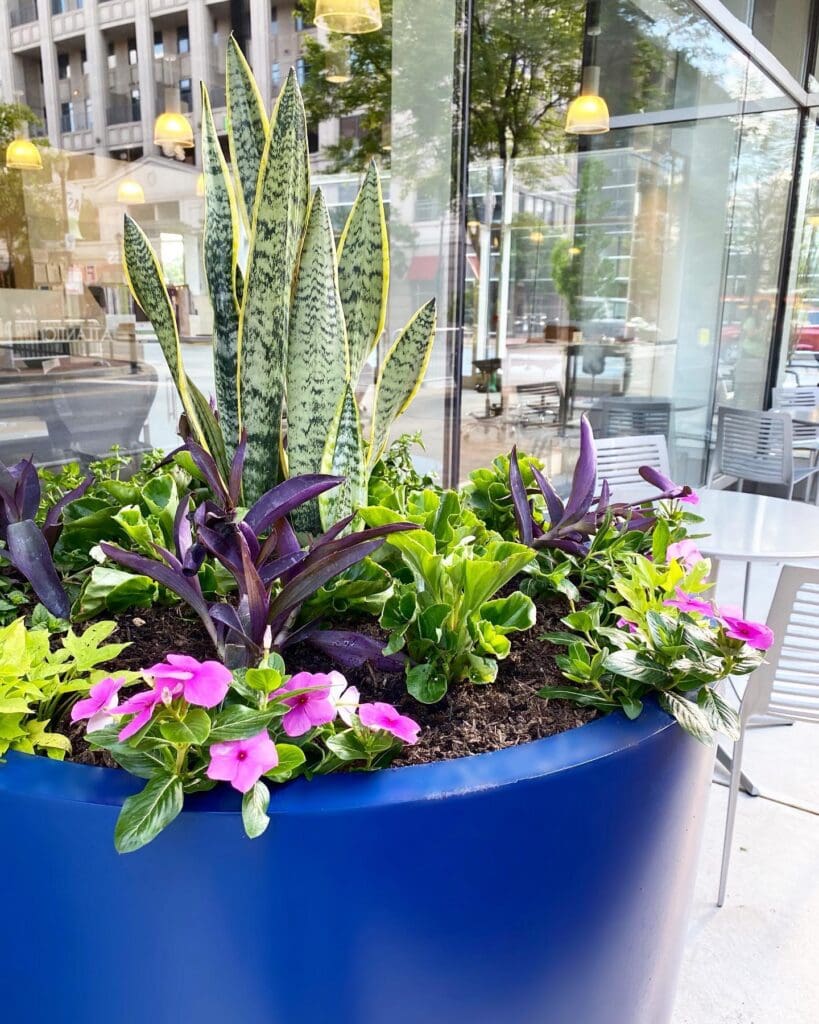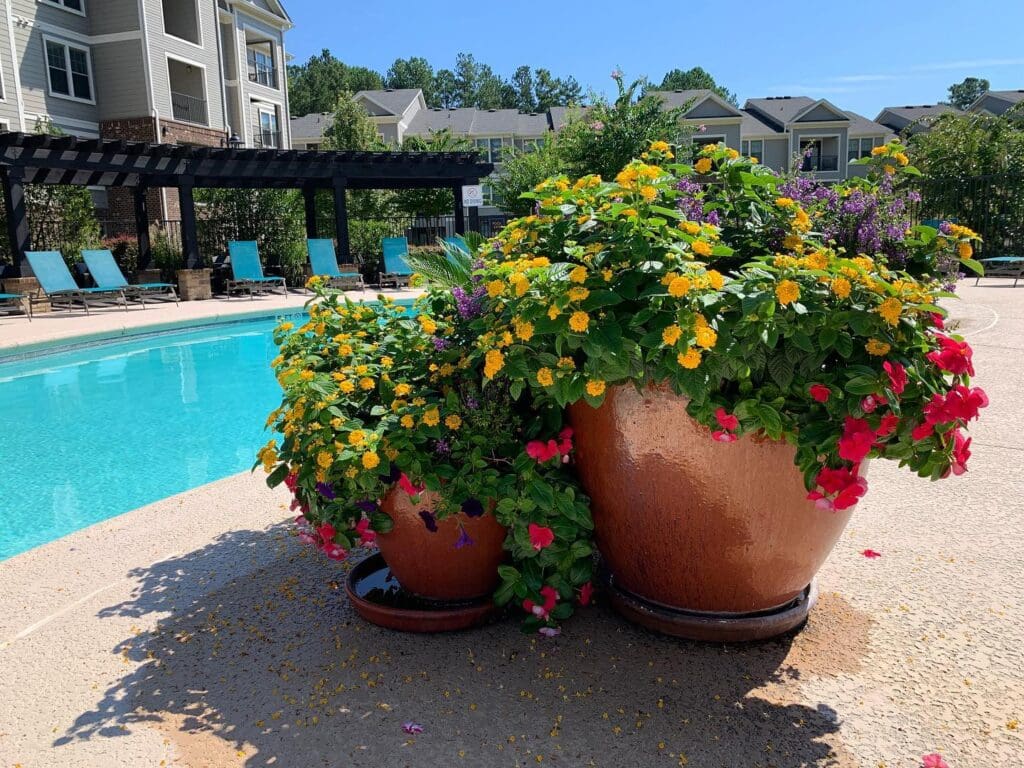
Our Level Up series shares the strategies that help landscape and lawn care companies get to the next level.
For many landscape companies, seasonal color is just one service offering of the many they provide their customers. However, for Color Burst, based in Grayson, Georgia, the design, installation and maintenance of seasonal color is their only service.
Joe Burns, president of Color Burst, started out working for a landscape maintenance company after graduating from Auburn University with a degree in horticulture. After seven or eight years, he and several other employees purchased this business.
They started a branch in Nashville, which Burns ran until the other partners ended up selling the business to him. Eventually, he sold this business and started Color Burst in 1987.
Burns says he isn’t looking to reach an ideal company size. Color Burst’s annual revenue last year was $2.7 million. Burns acknowledges that by just doing flowers they’re never going to generate $60-$70 million a year like a full-service commercial landscape maintenance company.
“My personal definition of success would be happy customers and a happy team,” Burns says. “I didn’t get in this for the money.”
Honing Their Focus
Burns says that he was working with a young horticulture grad when she suggested they just do seasonal color as it was the most fun and profitable service they were doing in Atlanta.
“I said that’s the craziest thing I ever heard, but we talked about it and talked about it, and lo and behold, we decided to do it,” Burns says.

Burns says in the early days, they had plenty of opportunities to do other jobs, and they’d consider them if they needed the money. He says they would do a couple of small landscape jobs here and there, for instance, if a customer needed some bales of pine straw spread.
“Once we got up and running, we just stayed focused,” Burns says. “If anyone wanted something else, we said no. Flowers is our thing.”
Color Burst primarily serves commercial clients such as apartment communities, office buildings and HOAs. They typically do two seasonal changes for their customers with spring installations running from April to Memorial Day and fall installations starting around Oct. 1 and finishing by the first or second week of November. For their higher-end properties, they do another planting in August.
“Through the years, we’ve had some clients who wanted new flowers every month,” Burns says. “We’ve been there and seen just about everything, but the vast majority of our customers are doing twice a year, and the highest, say 10%, are doing three times a year.”
Around a year and a half after starting the business, Burns began to expand Color Burst branches throughout the Southeast. They would have major growth periods when they added new branches.
Burns says they had four true branches with their headquarters in Atlanta and branch locations in Birmingham, Nashville and Charlotte. However, they also had staff in Huntsville, Memphis, Raleigh, Greenville, Columbia and Charleston.

Burns says when they first branched out into these locations, they were able to build up quickly because the competition was unsophisticated with their flowers. He says there was a lot of low-hanging fruit starting out.
“We did way better,” Burns says. “There was a noticeable difference. Then pretty soon though, the other people looked around the landscape and said, ‘Well, we’ve got to do better.’”
As their competition stepped up their efforts, Burns said they had to sell as hard as they had to in Atlanta. During this time period, Burns was traveling constantly, both professionally and personally, as one of his daughters was on a softball team that traveled a lot for tournaments.
“A lot of times, I would get back into Atlanta from being gone all week, pick her up and either go get on another plane or get in my truck to go to a tournament for the weekend, come back Sunday night to get ready to go out of town again,” Burns says.
It was around this time he ended up selling his Nashville Color Burst operation.
“Little by little, I started listening to offers and getting out of those markets because the margins were no different than they were in Atlanta,” Burns says. “So why would we have a branch in Charlotte if the margins were no different than they were in Atlanta?”
Burns decided they could get more work and growth by focusing on their efforts solely in Atlanta.
“With all your branches, you probably need to get out there and do a little math,” Burns says. “I think a lot of them haven’t done it. If they would get focused in their home market, they might find out the same thing I found that there’s plenty of work in Atlanta and the margins were the same.”
Keys to Success
Burns says their company has been successful thanks to their creative, unique flower beds, word-of-mouth advertising and great team members spreading the word. He also says NALP has helped them grow over the years.

Burns says his NALP membership has provided him with continuing education for himself and his staff and many friendships made in 40 years. He also appreciates how the NALP government affairs team combats unhelpful regulations like those on pesticides.
He says they are able to keep their seasonal color displays fresh by hiring creative people, visiting trial gardens to see new plants and trialing plants in their own gardens.
One example of how they’ve been able to generate word of mouth is by winning the contract to do all the planters for the 1996 Olympic Village in Atlanta. Burns says they learned a lot about planters and many of their customers were curious about adding planters. It served as a good selling point for them, as before planters were an afterthought.
Burns says planters have become quite popular around buildings in Atlanta where there are fewer landscape spaces and around apartment building pools.
“To this day, we still target that market and have some accounts that have nothing but planters,” Burns says.
Burns says when clients start cutting their budgets, they do have to fight for them to keep seasonal color.
“When the economy turns down a little bit, that’s good for us,” Burns says. “Because we tell them, ‘It’s going to be competitive and you need to make sure your place is looking its best,’ like for an apartment, it’s going be a little harder to lease with the economy going down.”

He says when the economy is doing very poorly, the customers struggle to look at the long-term benefits and only see the money it costs them.
“In that case, we will find that they may say, ‘You know those two beds off on the backside of the entrance? Let’s leave those empty this season,’” Burns says.
He says when the economy improves, the clients will want to add on to the flower beds. The economy also impacts their competition with other landscape companies that are on the property maintaining other aspects of the landscape.
“When the economy is really good, we notice that they’re happy enough to leave the flower business alone because they don’t really understand it,” Burns says. “They can do other things with their people that are more profitable. When it gets tighter, like now, we see more competition.”
Recruiting and Retention
While most landscape businesses experience some seasonality, Color Burst has two main busy seasons for about six weeks each in the spring and the fall. Despite this, they are able to retain many of their workers.
“Amazingly we have people that come back,” Burns says. “Probably half of our people that we hire have worked for us before. They’ll just quit whatever job they’re doing and come work for us for six weeks because we let them work a lot. They can work 70 hours a week. So they love it.”
He says after those six weeks, the employees will take a week or two off and then go back to their previous jobs. Again, in the fall, they’ll return to work for Color Burst.

Burns says they budget for the overtime costs and it ends up being cheaper to pay the team for the time they need them versus trying to keep them on for 12 months. During the slower times, they have 15 employees and as they gear up for the busy time, they have around 25.
Burns says they treat their staff like they’re full-time employees when they’re with Color Burst. He says they are able to retain their company culture by hiring for attitude. He says they look for friendly individuals.
At one time, they hired solely from the horticulture programs all around the Southeast.
“It was good for us at the time, but we shifted,” Burns says. “It just became more important to us to have good attitudes. We decided that we’d rather have someone with a good attitude and teach them about plants, than bring someone in who was good with plants that maybe whose attitude wasn’t quite as good or who maybe wasn’t as outgoing.”
He says they’re looking for people who are customer-service-focused.
Click here to read more Level Up stories.

